On Monday (October 3rd), the LA Weekly published a jaw-dropping article regarding the revelations made by former Los Angeles Police Department detective Greg Kading in his just-released book, Murder Rap: The Untold Story of the Biggie Smalls & Tupac Shakur Murder Investigations.
After a 25-year career in law enforcement, Kading retired in 2010 and began writing his book detailing the three years he investigated the murders of The Notorious B.I.G. and Tupac Shakur from 2006-2009 as part of a joint L.A.P.D./federal task force that set out initially to solve the murder of Biggie Smalls in the wake of his mother Voletta Wallace’s multi-million dollar lawsuit against the city of Los Angeles for allegedly covering up the fact that then on-duty L.A.P.D. officers helped coordinate the shooting of her son outside of the Petersen Automotive Museum in the early hours of March 9, 1997.
Ms. Wallace’s belief that former L.A.P.D. officers (and affiliates of then CEO of Death Row Records, Marion “Suge” Knight) David Mack and Rafael Perez directed the godfather of Mack’s children, Amir Muhammad, in the shooting death of her son stemmed from initial investigating done by former L.A.P.D. detective Russell Poole. But now one of Poole’s successors in investigating the Biggie case, Kading, is claiming that he disproved Poole’s theory, and that rogue police officers were not in fact involved in the murder plot. Kading does however align with Poole in his belief that Suge Knight orchestrated the hit, but believes that Suge’s “go-to guy” for murders was not a cop (and that his hit-man was actually contracted by one of the mothers of Knight’s children, who is identified as “Theresa Swann” in Murder Rap to protect her real identity).
Yesterday (October 4th), Greg Kading, a Medal of Valor recipient for bravery, spoke with HipHopDX (courtesy of Rare Bird Lit) in a two-part interview, with the first half of Q&A dedicated to his investigation into the murder of Notorious B.I.G. The man who shocked the Hip Hop world by challenging the seemingly solid theory put forth by Russell Poole regarding the murder of Biggie Smalls further raised eyebrows in his discussion with DX by refuting several previously established facts in the case, and even challenged one of the most convincing criminal identifications ever captured on film.
Greg Kading Counters Amir Muhammad As A Suspect In Biggie’s Murder
HipHopDX: I wanna start off by asking you about the crucial elements of The Notorious B.I.G. murder investigation. First, do you believe Amir Muhammad was at the Petersen Automotive Museum the night Biggie was killed?
Greg Kading: No, actually I don’t. The whole Amir Muhammad theory we were able to refute.
Amir Muhammad was a name – actually, there was never an Amir Muhammad’s name, there was just an “Amir,” which was part of a clue given by a jailhouse informant named Michael Robinson. He says that he heard that it was “Amir,” or “Ashmir,” or “Kenny,” or “Keke.” So when he’s interviewed, and he’s giving information to the detectives, he says this is what he heard, is that, “It was a guy named Amir.” “It was a guy named maybe Amir or Ashmir.” He’s not even sure. He goes, “Maybe it’s Kenny, or maybe it was Keke.” So there were these four different names that that informant gave out. There was never a last name or anything else connected to it. However, he mentions this Amir/Ashmir/Kenny/Keke guy is supposedly a Nation Of Islam guy, and maybe he was a Crip affiliate or maybe a Crip, and he’s a hit-man. So he provides these little details in his clue that are kind of vague, they don’t really give you anything substantial: there’s no last name, there’s no real physical [description], there’s no residence, nothing.
This is a very key element, because it’s this clue that takes the entire investigation down that rabbit hole of Russell Poole’s. And Russell Poole’s theory of course leads to the inevitable lawsuit about the police being involved because Russell Poole finds out that a guy named Amir had visited David Mack at the Montebello City Jail after his bank robbery arrest. And he’s like, “Oh, shoot! Amir? Wait a minute, I have a clue with a guy named Amir on it.” It was a very loose connection. It was definitely necessary to follow-up on it, but it wasn’t enough to build a whole theory around.

DX: Well, Russell Poole’s theory got a little bit more solidified in Nick Broomfield’s Biggie & Tupac documentary, when former Bad Boy Records bodyguard Eugene Deal identified Amir Muhammad as being present at the Petersen Automotive Museum that night, and that Amir actually approached Diddy first in a possible attempt to shoot him. Do you accept Eugene Deal’s identification of Amir as being credible?
Greg Kading: No, I don’t, actually. Because, the whole six-pack [photo lineup shown to Deal], the whole identification, the whole thing became corrupted.
And if you look at the initial statements of Eugene Deal, and Lil Cease, if you look at the eyewitnesses’ statements [from the people] that were actually in the car, they’re very vague, and they’re very contradictory. And you don’t see that Eugene Deal brings up the fact that there’s this guy in the parking lot who he identifies as a Nation Of Islam-looking guy who approached them – that stuff doesn’t get brought up until a second interview, at which time Lil Cease and Eugene Deal have had a chance to kinda compare notes.
In law enforcement, when you’re doing these interviews, you have to realize how one person’s conversation influences another person’s perspective. And so when you have these guys and [they’re like], “What did you see? Well, what did you see?,” well then they develop their own perspectives on what happened. And they’re trying to help, and it’s all honest, but they influence each other, and sometimes they taint each other’s perceptions.
All I’m trying to say here is that, that I.D., the video I.D. [in Biggie & Tupac] where [Nick Broomfield] gets up and Eugene Deal points at [a photo of Amir Muhammad in a lineup], there’s a lot of problems with that legally, and the way that it was developed. Now Eugene Deal’s looking at Amir Muhammad but he’s also now seeing – ‘Cause you know there were two [sketches of the suspected shooter], right? So there were some problems in the development. They weren’t able to keep that identification clean.
But the most important thing – and I’m not calling [him a liar], I think Eugene Deal is trying to help as best he can. And I think maybe he was trying to help too much, as opposed to just being perfectly honest. I think there was some influence there that caused him to point out that picture. But the point is this, there may have been a guy there that was in the parking lot that matched the description of that person, but that’s nothing like what Lil Cease sees and the other witnesses see of the person that’s behind the wheel of the car.
DX: Speaking of that initial composite, even [for] the first composite Lil Cease describes someone in a suit and bow tie. Do you believe that he didn’t see what he thought he saw?
Greg Kading: I would love to sit down and show you their actual statements, because you see that Lil Cease doesn’t give that description in his initial interview. He only gives that description after he’s gone and talked to Eugene Deal. And then later on when the detectives come back, he incorporates Eugene Deal’s details into his own statement.
DX: So who do you believe was that lone person in that car who did the shooting?
Greg Kading: We believe it’s a guy named Poochie, who was a Blood affiliate of Suge Knight’s. His [given name is] Wardell Fouse.
DX: You believe he did the shooting himself?
Greg Kading: I do believe that. I don’t believe that he was there completely alone though. We have no idea who might’ve been helping him. And maybe there was this lone Nation Of Islam guy, that Eugene Deal pointed out, that was acting as a spotter, or somehow tried to help coordinate it. But I don’t believe that some guy in the Nation Of Islam was the shooter.
DX: Do you believe the shooter drove a dark-colored Chevrolet Impala as witnesses claimed?
Greg Kading: Yeah, absolutely. As a matter of fact, if you look at that official video – the YouTube video, there’s several versions of it but there’s one that says “official” – if you really dissect that, which we did, I have absolutely no doubt in my mind that that is Poochie in his car … in that dark-colored Impala.

DX: And do you believe Poochie dressed up in Nation Of Islam garb?
Greg Kading: No way.
Greg Kading Clarifies Who He Believes Murdered Biggie Smalls
DX: Do you believe David Mack and Rafael Perez were at the Petersen Automotive Museum the night Biggie was killed, as was recently revealed to have been alleged by a former cellmate of Perez’s?
Greg Kading: No, I don’t believe that. I don’t believe that at all. I have no reason to believe they were there, but I don’t have any – I haven’t seen the evidence that was in the civil case [brought by Voletta Wallace] regarding the L.A.P.D. I was involved in the criminal investigation. We were kind of bifurcated away from the civil investigation. So saying that, we have no reason to believe that Perez or Mack were there.
Again, the most important thing here to remember is the foundation of this whole theory is corrupted because Michael Robinson, the jailhouse informant that provided this information that led to this idea of the Nation Of Islam/Amir Muhammad, that whole thing has been refuted because we – There’s another witness in this whole thing named Waymond Anderson. He came on early, he was claiming that Suge had tried to hire him to get some guns, and some other Suge associates were gonna go do the murder. Well these two guys that were both talking to law enforcement about the same time – This is one of the key mistakes that the L.A.P.D. in the early investigation did, was to fail to recognize that these two informants were in county jail together and were collaborating. So once you realize that, and you start to really question now the viability of their clues, then the whole thing begins to fall apart.
DX: Just bringing the investigation up to more currently … What evidence did you collect in addition to the statements of “Theresa Swann” to tie Wardell “Poochie” Fouse and Suge Knight to the murder of Biggie Smalls? What evidence in addition to her statements, besides just – you mentioned the I.D. that you believe was him on video, any other evidence in addition to that?
Greg Kading: Well, no, there’s no I.D. of him on video, so sorry if I misrepresented that. I believe that’s him, but you can’t see him on the video so there’s no way to really identify him. I’m just drawing that conclusion based on all of the other collective information: the fact that “Theresa,” the girlfriend, confesses, she tells us that she had paid Poochie at the direction of Knight, [that] Poochie had an Impala that Knight had bought him, and then we have these other people that were in the inner circle, the other Death Row [Records staff]/gang members who all told us about this relationship that Suge had with Poochie. And we have these reports of Poochie doing these other shootings for Suge. And so we’re like, “Okay, well this seems to be his kinda go-to guy when he’s having these kind of problems.” And so that’s all the stuff that’s discussed in the book, and it will compound the girl’s statement. We took her statement, it was reinforced with these other statements by these other insiders, and then the circumstantial evidence of the car, the money transfers, all of the things that happened [that] led us to believe that she was telling the truth.
DX: So you have proof of a money transfer?
Greg Kading: Yeah, we have – There’s … we … We had a good case.
DX: I read in the LA Weekly piece that Swann’s interview wasn’t recorded?
Greg Kading: That’s correct.
DX: Okay. That … that seems a little – I mean, why wasn’t it recorded?
Greg Kading: Yeah, and this’ll probably sound a little bit suspicious to you, but working in these federal task forces all the different agencies have their own internal policies about interview protocol. And, we were always recognizing because we had taken this to the federal investigative level – including [having] the F.B.I. involved in all of our interviews – [that] they have their own policy that they don’t record their interviews. And this is their own policy that you can look into and probably verify. We were honoring that, and saying, Hey, if the F.B.I. doesn’t want the – And there was an F.B.I. agent actually in the interview with us. And so, we had this long discussion, and we said, “Should we record this or should we not?” And we came to the collective agreement that we wouldn’t.
DX: And I understand you had her read a faked confession from Poochie, who was already deceased?
Greg Kading: Yeah, that’s correct.
DX: Is that also protocol or – ?
Greg Kading: It’s what we call a ruse. I don’t know how familiar you are with interrogation practices, [but] a lot of times, especially when you’re dealing with people with these kind of criminal backgrounds, they’re much more likely to … I won’t say be at ease, because it’s never that. They’re much more likely to open up and begin to discuss things that present their own culpability in crimes when they think that somebody else has already opened the door, that somebody else has already ratted.
For instance, have you ever seen that movie L.A. Confidential? Remember, there’s a scene in there where they’ve got these two guys in there that they’re interrogating, and they convince the one guy in one room that the other guy is ratting out on him, and then they start to – that opens the door for them to then [be like], “Oh, okay, well if he’s ratting him out then I’m gonna do it.” Well, it’s kinda that same psychological technique that we use a lot in law enforcement.
It’s like a ruse. If somebody thinks that somebody else has already let the cat out of the bag, it’s much more easier for them to [talk]. ‘Cause now she can go back and tell Suge, if she ever gets confronted with her cooperation, she can say, “It wasn’t me, Poochie already snitched us out.”
DX: Now, I don’t know if you can answer this question, but I do need to ask it: Is “Theresa Swann” actually former Death Row Records artist, and mother of Suge Knight’s nine-year-old daughter, Michel’le?
Greg Kading: No, it’s not.
DX: Okay. And, it’s your assertion in Murder Rap that Suge Knight instructed Swann to contact Poochie to arrange the hit on Biggie while Mr. Knight was speaking on a prison phone that he knows was being recorded?
Greg Kading: No, absolutely not. It was an in-person [meeting]. … Swann met with Knight in jail on more than one occasion. And that’s where the solicitation and the conspiracy was fostered.
DX: [Were] there any eyewitness reports of this conversation by prison employees?
Greg Kading: Well, we don’t know. Because, when she tells us this so many years have gone by to go back and try to – to go back 10, 12 years and try to get any kind of inmate records about a visitation, they don’t exist. That stuff gets purged out. There’s no way to go, Well, who was the deputy on charge that day? I mean, there’s just no way to know. However, as you’ll read in the book, there was a third person there, which was Suge Knight’s attorney, David Kenner. Now David Kenner has what we call … he’s got privileged communications, because he’s the attorney. Which means, they don’t have to talk on a phone, it means they meet in the attorney-client area of the jail where they can have full contact, non-monitored conversations because it’s attorney-client [privilege]. So no deputy or no prison employee’s gonna be able to stand there and listen to it. So what Kenner had done was he brought Theresa Swann into the jail under the ruse of her being his legal aid. So, Kenner shows up to talk to his client, Knight, he brings Swann with him, says, “Yeah, she’s my aid,” and now it allows the two of them to sit down and talk, without any monitoring, without any overhearing and all of that.
DX: And did you interview David Kenner about this meeting?
Greg Kading: No, I’ve never interviewed David Kenner. As you will read in the book, I was pulled off the task force shortly after her confession and I never got a chance to do all the follow-up stuff that needed to be done.
Much of the holes that you’re gonna find in this is simply because there was nobody there to follow-up on the investigation once I got ripped out.
DX: And, ultimately you believe Biggie’s mother is mistaken in her apparent loyalty to Russell Poole’s original theory that Amir Muhammad murdered her son at the direction of former L.A.P.D. officers David Mack and Rafael Perez?
Greg Kading: Yeah, absolutely. When you see that the foundation of his theory implodes – ‘cause it was all based on this very arbitrary clue from a jailhouse informant that I think we’ve disproven – once that foundation falls apart the whole Amir Muhammad thing, the whole David Mack thing, the whole thing is irrelevant. Because, the bottom of that’s already been taken out and refuted.
DX: Just out of curiosity though, did you ever converse with Russell Poole during your investigation?
Greg Kading: No, I never did actually. No, I never got a chance to talk to Russ.
I need to qualify that, because it might look negligent if you just said, Well, he never talked to him. It wasn’t out of a desire not to talk to him, but because I was an employee with the L.A.P.D., with the city of Los Angeles, conducting an ongoing criminal investigation, and he was a witness in a civil suit for the plaintiff against the city of Los Angeles. It’s a conflict of interest for us to go and try to compare notes or have conversations. We’re precluded from having any conversations. I would’ve loved to have talked to Voletta Wallace during the investigation. I would’ve loved to talk to some of the other people on the plaintiff’s witness list, but we just simply couldn’t because the legal politics involved.
Greg Kading Defends LAPD’s Interest In Biggie Murder Investigation
DX: Lastly in regards to the Biggie Smalls murder investigation, were you ever implicitly instructed by your superiors in the L.A.P.D. to not identify former L.A.P.D. officers in your findings as having been part of the Biggie Smalls murder plot?
Greg Kading: No, absolutely not. As a matter of fact, we did the exact opposite. Every time we interviewed anybody that would be one of the questions we’d ask: “Well, what do you know about David Mack? What do you know about Rafael Perez? What have you heard about this conspiracy to murder [Biggie]?” We made a point of that. I mean, we went into this with a very objective attitude. Trust me, if there’s anybody that I wanted to be guilty, it was David Mack. But, that’s not how you conduct an investigation.
We would ask, and if anybody tells us, “Hey, it was David Mack,” well we would immediately draft up a report, [and] we’d give that to the Internal Affairs division, which was handling the lawsuit against the city. So that was the protocol we had. If anybody that we talked to had any information on David Mack, we always made sure that was then pushed over into the civil case. We had very explicit orders that any developments regarding Mack, Perez or any other L.A.P.D. officer tied to Death Row, we had to make a special note of it and then hand that over. The problem was we never got any. Everybody that we would talk to and bring that up and ask those questions it was always the same answer: “Well … yeah …” “How do you know?” “Well, it’s what I read in the newspaper.” “Well, why do you believe that?” “I read it in the newspaper.” So everything about those guys was stuff that was hearsay information. Nobody ever had anything beyond that.
Stay tuned to HipHopDX for the stunning second half of our conversation with Greg Kading, in which the former member of the Los Angeles Police Department takes DX through his investigation into the murder of Tupac in Las Vegas.
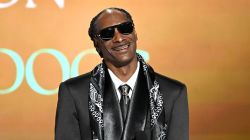

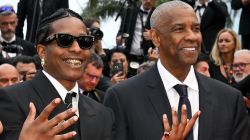
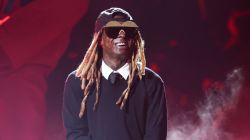



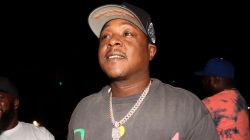


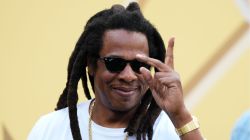
Just bought the book.
These unsolved murders of 2Pac and Biggie really frustrate me and others I imagine, but I’m glad I read this exclusive right here. Very informative.
Too all you’ll 2pac murder is unsolved, we already know the true about Biggie, Suge had biggie killed, real is that so hard to tell.
Really. Please state why you think Suge was involved in Biggie’s murder.
Suge is a BOSS, that’s how and why he had piggie killed. mrs. combs and miss wallace couldn’t touch 2 pac.
You’ll forget get suge had 2pac killed to he is a real loser, from riches to the pooresh
great shit dx
who the fuck cares about PAC anymore, he is more of a fag than half the rappers out today yet he is worshipped.
RESPECT THE GREATS THAT CAME 1ST YOU FAG
Meanwhile you’re prolly a Lil Wayne dickrider
I bet this dude downloaded Lil B’s album and bumpin it as we speak.
nigga, you ain’t shit but a broke coward hiding behind a computer. if anything people think biggie is a joke, because 2 pac exposed his fake non pimp ass.
I was just told that 2Pac forgot to brush his teeth the night he got shot
i was just told that your mother is a welfare, food stamp and section 8 crackhead whore lol. you using the public library computers, ole broke ass bum.
Some people have this delusional theory that Suge Knight had Pac killed. Crazy talk. All I have to say is this, you hit me and my man, well, we will to hit you and your man. Plain and simple, street-gangsta shit.
Suge DID have pac killed, at the time Suge owed Pac over $15 million dollars and Pac was also about to leave Death Row and take hundreds of unreleased tracks with him
I think BIG and Puff confessed on BIG’s “Long Kiss Goodnight”.
“My team in the MARINE BLUE, SIX COUPE”
“Slugs missed you, I MAD AT CHA”
“These fucking maniacs put my name in raps”
“As I leave my competition, RESPIRATORY STYLE”
negro please. biggie and diddy wanted the world to think they put the hit out on pac, and suge. the reality of it is this, bad boy was for image and death row was real life. suge got biggie killed, but crips killed 2 pac because of beef unrelated to biggie.
u git half those lyrics wrong idiot..
Slugs missed ya “i” aint mad at ya.
and Respirator style. not RESPIRATORY style u stupid fun boy!
haters how do you get it right to hate and insult a dead man.. Pac and Biggie forever
Puff and Suge should both go jail.\
Puff got Pac killed and Suge got Biggie killed. we want justice!
Thats ridiculous. Puffy has never made any vile or mean comments toward Pac. It just didn’t happen. If anything Puff wanted to squash things between Pac and Biggie. Suge on the other hand was jealous of Bad Boy’s success and instigated the situation with Pac and Biggie. I think Pac and Biggie would have been cool had it not been for Suge constantly instigating and being in Pac’s ear. It why Dre left and why Snoop, Rage, Dogg Pound were in disarray.
Don’t let Puff full you. Puff had the resources to order the hit on Pac and Suge. Pac was giving it to Big, Puff, and Bad Boy. Shit that went beyond rap wars, where family got involved. BIG and Puff flaunt about the hit on Biggie’s “Long Kiss Goodnight”.
The Pac vs. BIG and Puff beef brewed up before Pac signed to Deathrow. Suge didn’t instigate nothing between Pac, BIG, and Puff.
@trooper, go on youtube and type in tupac diss by puff daddy
@Trooper you are a damn fool. puffy never made vile or mean comments to pac? hahaha. Suge jealous of bad boy? ok riigghtt. BOTH Suge and puff did some shady shit. puff just does it with a smile and is “non-threatening”. Suge don’t give a fuck and won’t act fake and front for the camera like puff does
@trooper: how in the hell was suge jealous of bad boy, when death row was selling more records at the time?? if you listened to 2pac’s lyrics then you would know why pac and death row was spanking bad boy. you ain’t shit but a dick riding stan for the east coast. fuck you.
i truly believe the time period made things worse. the 90’s was the worst in LA. anger was at an all time high and gangs were at a peak. seems like things calmed down around 99 or 2000.
Can a decorated officer even make up this kinda shit?! We all kinda knew who killed who, the question was would they get caught.
this just wants to write a book and then sell it?
come on i wanna see courtcase?
so this swann chick confesses to giving money to the dude that shot big,,,,,and dude is dead,,,,,,,,sounds a little late to be writing a book about it if dude is dead,,,,,,,,niggas gotta away with murder basically
He pins this shit on a dead guy after all these years. I’m not buying it, the LAPD is bullshit. They probably still sprinkling crack on people they kill.
Open and shut case johnson!
“Cops as crooked as the niggaz they chasing”-From “They dont give a fuck about us” by 2pac. He said it then and It still stands.He and Big we gaining too much power for America to sit back and let it carry on.
All I can say is this, Biggie wanted to play the role of kingpin, hanging out in L.A. like he put the hit out on 2 Pac. He was trying to play up to that bad boy gangsta image, so that his character would be believable. There was only one problem though, he ran up on some real gangstaz and they served his studio ass.
@213 To The Death of Me! you are stupid,Biggie was a rapper, had fan all over what he was just suppose to stay in brooklyn, 2pac on the other started a lot of fight where ever he when man, he had a death wish. listen to the nigga songs it speak for itself
@718
people can go where they want to, however, biggie and puff were trying to act like they the ones who had pac killed. they were acting like they were boss gangsters in los angeles and that’s why biggie fake ass got dealt with, bitch.
@Dropzone you are stupid too, biggie and puffy never try to act like there are boss, it call selling and promoting your music, dont blame biggie and puffy for 2pac getting kill, like i said 2pac kept inviting that to himself by the things he did and said on record and off record, the nigga was walking around acting like he bullet proff, someone prove he wasnt, but check it 2pac gone his mother had to fight suge for this rights, suge broke and stupid biggie gone, his mother paid like it aint no tomorrow, bad boy record still hitting and puffy about to hit his firt billion in a minute, point prven you’ll niggaz on the west are Stupid, keep killing one another, that what you’ll do best
when pac died B.I.G. didnt care and you could hear it on his Life after Death album shots at pac even when he died.
Then you go to LA after one of their major icons dead with all this rivalry this was bound to happen.
@213,Dropzone & Anonymous: Yo all you’ll holla biggie and puffy was acting like gang boss, biggie didnt care about 2pac being killed you hear it in his album, seriously man you’ll niggaz need to be for real and stop freaking, would you, after all the things 2pac and suge was saying and the way they were acting, Plus no one scien to remember 2pac invited a lot of that, just listen to all his album, someone should have told him that he is not bullet proff. aitn that much fun when the shoot are flying back
‘Amir Muhamamd’ aka Harry Billups(real name) was the shooter. I dont buy this Greg Kading guy for one second, he’s probly bein told to feed misinformation by the lapd. Russel Poole is right. And Eugene Deal was never pressured into pointing out the pic of Harry Billups, he was shown a sheet of different faces and pointed him out straight away. Lil Cease had done a sketch of the killer b4 this and it’s obv Harry Billups.
Just like with the OJ Simpson case we have more misinformation from one of LAPD’s own it appears. Kading does no recording, or everyone is dead, so now who’s to verify? Just like the missing telephone records of OJ’s in-laws removed by an LA County Court Officer from the Simpson case file, proving OJ’s wife was alive when OJ caught his flight to Chicago, a loose thread will show up in the Biggie-Tupac case too to hang these esteemed officers up in another big lie. Remember it was Perez who broke the Rampart Scandal due to his fear of facing the 500+ innocent men he had framed if sent to a state prison. Kading’s info is dubious to say the least in trying to distance the LAPD’s involvement/
wow, you kicking knowledge to these lames. stop giving them that good game for free……silence is golden
Whoever wanted Big dead wanted to make sure the job was done correctly. If they knew Big and Puffy was going to be in a heavily populated area after the party, why on earth would someone want to commit a crime with so many witnesses smh? It seems to me that the firefighters shutting down the party was a ruse to get Big and his entourage to leave the event. It sounds to me that some people in very high places ensured that this murder would take place and knew that the investigation would go nowhere.
negro please, it took people in high places to kill jfk and bin laden, but not no damn fat fake pimp gangter rapper, who never talked about politics. why you think puff still rich? because he preaching what the white man want the young minds to hear, just like biggie…..party and bullshit is all bad boy do.
well said. This guy is a former corrupt officer who is doing everything he can to muddy the waters so the case won’t be solved. And most importantly he is trying to make sure the state of California doesn’t have to pay the biggest settlement in history. Mr. Kadding is a fraud and snake. He has no proof and he is a lil pawn for the big wigs. LAW ENFORCEMENT OFFICERS WERE INVOLVED IN BOTH MURDERS!!!!
The 9mm ammo used in the shooting were the Gecko 9mm armor piercing bullets and David Mack owned those kind of bullets in his house along with a shrine to 2Pac Shakur and a black Chevy SS Impala(Similar to the one driven by the shooter.) although he wasn’t the shooter.
Seriously folks,
If they wanted to solve the murders they would’ve solved it. What’s with all these different points of views, all of which are attached to a price tag at the end of the day. Selling books to a viable consumer base (hip hop community). Outsiders of the culture attaching a price tag to justice.
These guys know hip hop fans will buy into it. He understands the psychological factors required to coerce witnesses (snitch aspect of interrogation). He’s a thinker not a fool. They respect the ability to sell to us, buying power or hip hop.
This man is not a dummy. Decorated Kading still bleeds blue at the end of the day (receives lifetime retirement pension from city of LA after 2 decades of service).
So who do you think he has loyalty to?
The truth (Afeni Shakur, Voletta Wallace, & the hip hop community) or the hand that feeds (City of LA).
Law Enforcement is probably like, man if they accept Rick Ross the rapper, while the real one is still alive, these m’fuckers are stupid. I’ma sell water to a well.
ie. this new book
Truth fight here.
Why doesn’t anyone kill the shitty rappers?
no one is ever gonna come out and confess,so at this point i dont even wanna know who killed biggie or pac (SUGE) because either way they not coming back and we as fans can and should only just appreciate the music they gave us RIP!……… suge!
So many holes in this case it’s ridiculous. Whoever murdered him obviously didn’t want to know they were behind it and they succeeded, and I think that is the way it will always be. We will never know for sure who murdered Biggie. Or Pac for that matter.
Interesting that with all the facts floating around, police are yet to interview and follow up on some of the suspects… that to me should be a case for conspiracy and cover up that the FBI should step into as they are such controversial cases that would most probably take a mob like crime ring off the streets… scary prospect of a corrupt legal system keeping us ‘safe’.
Suge had 2pac killed because he found out pac was going to leave death row and he had biggie kill to try and stop puffy from getting his first billion didnt work, that nigga suge is the biggest loser i ever seen,
Suge is Gay no real boss or gangster had to pay other people to kill 2pac and biggie, if i ever catch that nigga on the east cost, oh wait that nigga broke cant even buy a ticket for gray hond, he lucky so when i come to the west cost suge i am looking for were all the homeless man stay i am coming to check you nigga, you the fakess gangster i ever know
yeah right
suge got shot in the head when pac got shot in vegas why da fuck would he let that happen if he called da hit
I don’t think he’s saying Suge ordered the Pac hit…I think he’s saying Suge ordered the Biggie hit.
In the article before this one He said that he felt Diddy was behind the Pac shooting and Suge was behind the Biggie shooting.
err wrong again i killed big
faggot
this guy is just trying to make some money.He has no clue who killed Big or Pac.LAPD was just pretending to investigate because of presure,they never want anything about these murders to come out ,it a set up
Hold up stop, enough, Biggie and 2pac aint coming back they are gone, and everyone need to stop trying and make money off them niggaz, the way i feel if all these people writing books, given interviwe and saying this and that,and i am yet to see puffy or suge or any rapper put up a million for anyone to step up and say who kill them because someone knows and spend more time trying to find who killed biggie and 2pac, they might just find who kill them
THE WHOLE L.A POLICE DEPARTMENT IS CORRUPT
The whole of LA is corrupt to Much wet back and niggaz is stupid
show tonight. Homeboy Sandman interview and exclusive freestyle. follow on twitter at @RadioRebels
I’m 25 years old.
I love hiphop. But the whole whole killed the Messiah shit is old.
I’m not even gona read this article… I dont care!
you obviously don’t care for the individuals. It is never to old to solve a crime. How would u feel if someone u loved was murdered, even if it was 30 years ago you would want answers and you would want someone to be held responsible.
you probably can’t read
all you bitching bout a dude trying to make money are ignorant. We all trying to pinch a dollar out a dime and you hating on a dude who says he’s got a good idea who killed one of the greatest artists of all time? some hypocrits and haters up in this bitch, and yea all of LA’s corrupt…police are corrupt…priests are corrupt…human beings in general are corrupt. Get over it, and if you don’t like the fact the dude’s trying to profit maybe you shouldn’t of clicked the link. ya’ll are some sheep and don’t even realize it. OPEN YOUR MIND and think for yourselves, than again I guess ignorance truly is bliss.
Hip Hop in the 90’s was on a upward trajectory as far as making money in the U.S. Many people were invested in the industry or many people survived because of the Hip Hop culture, and also look at the scores that would feed from Hip Hop a decade plus past the incident. What I’m trying to say is forget who was the trigger man for know and just think about the catalyst….The MTV Awards when both Big and Pac allowed there beef to trickle out into American homes. All I know is that usually when its individuals who murder the truth usually comes out,however when its institutions well u all know the deal.
A French documentary by Alex Jordanov about a year ago already had pinpointed Poochie as the killer. They had other witnesses from within the Bloods…
Yeah, I saw it, that film was right on and also had Chuck Phillips from the LA Times with an interesting theory about the million dollars. I wish it comes out in da U.S. That’s the best film ever made on Tupac so far. By far.
This is frustrating, if they have all this proof then make some damn arrests! bring this shit to the courts and keep providing them with evidence until they are forced to deal with these cases because 15 years is too long. Pac and Biggie deserve justice, their family and fans deserve to know the truth.
That is why I Made a petition on this.
http://www.change.org/petitions/the-who-killed-tupac-and-biggie-truth-movement-bring-the-killers-to-justice?utm_source=guides&utm_medium=email&utm_campaign=petition_created
MF DOOM
KILLED HIM,THEM..
If the car was indeed an aqua green Chevy SS Impala, then why did they say the car was black?
Suge Knight was behind it all and he was already in jail when the murder occured. It all started with a visit from Theresa Swan(An old girlfriend of Suge Knight who was in disguise as an aid to an atturney) met with Suge in a private where he asked her to get a hold of his known associate Wardell Poochie Fouse AKA Darnel Bolton (A blood gang member)to do it. The 2 met at a Denny’s resturant in LA where Poochie asked for 9 thousand dollars to carry out the hit. Suge made numerous arrangements to get the money for Thersea and Poochie. On the night of the murder, he arrived at the Peterson Musuem dressed in a blue suit and bow tie and waited in his aqua green Chevy Impala. As soon as Biggie and Puffy got back into their rented SUV’s Poochie followed pulled up along side Biggie, rolled down his window and fired 6 shots from his 9mm gun before driving away into the night. After the murder, Poochie and Thresa met again and he requests for more money to get out of town. Thersea meets with Suge who has arranged 4 thousand dollars to give to Poochie totaling up to 13 thousand dollars for carrying out the murder.
There are still some unanswered questions surrounding David Mack and one of them was, if he requested 3 family illness days prior to his bank robbery then why did he need 3 family illness days prior to Biggie’s murder?
Russell Poole’s theory is the theory best supported by evidence. Amir Muhammad pulled the hit, and crooked LAPD officer and bank robber David Mack contracted him and was also at the Petersen Museum on that day. Big’s man D-Rock identified Mack, and Gene Deal and Lil’ Cease identified Amir. Mack worked for Death Row and identified as a Blood.
Kading is protecting the interest of the LAPD and/or Suge Knight, because in the latter case’ the shooting would look like retaliation for ‘Pac’s murder which was also masterminded by Suge.
2018 and you talking evidence and there’s none for this side lol At least the other comments are from 2013 so they can be ignant…
If Theresa Swann and Suge Knight conspired this murder why have they not been charged with murder..conspiracy to murder…or accessory to murder ? This guy’s book is bull shit and there are too many holes in his theory. And why did they remove him from the investigation ?